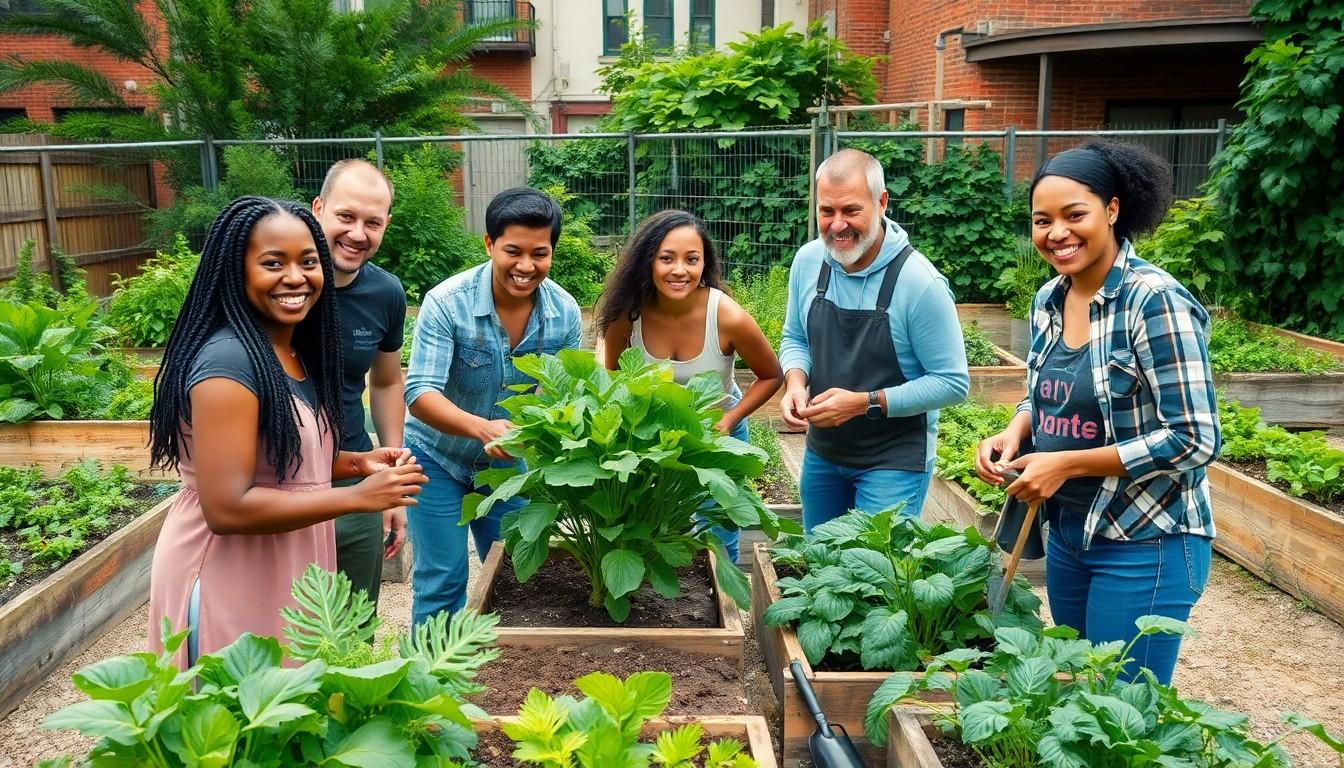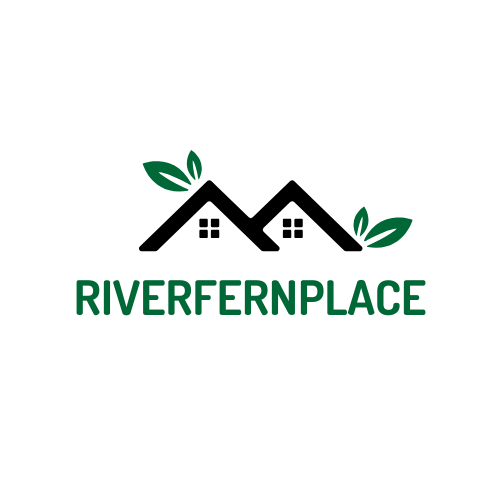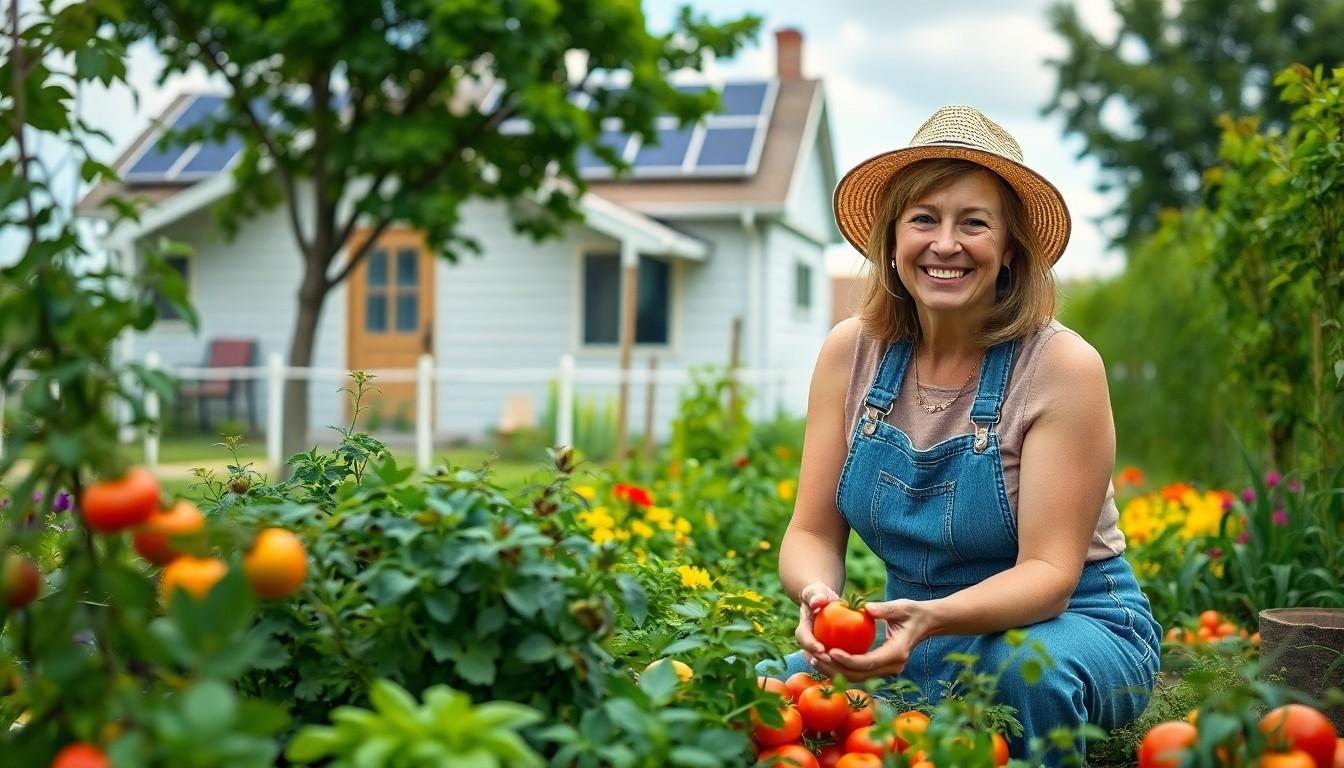In a world buzzing with convenience, the idea of self-sufficiency might sound like a throwback to the Stone Age. But wait! Before you dismiss it as just another hipster trend, consider the perks. Imagine growing your own veggies while sipping homemade kombucha, all while your neighbors wonder how you became the local guru of self-reliance.
Self Sufficiency Model
The self-sufficiency model emphasizes independence and resilience. It encourages individuals or communities to produce their own food, energy, and resources. This approach reduces reliance on external systems and promotes sustainability. Many people find joy in growing their own vegetables. Raised garden beds and container gardening provide accessible options for urban dwellers.
Homemade beverages, like kombucha or herbal tea, offer alternatives to store-bought options. Communities often come together through gardening initiatives, sharing skills and resources. Workshops on canning or preserving food can enhance collective knowledge.
Economic aspects play a significant role in this model. Lowering grocery bills becomes achievable through self-produced food. It fosters pride and potential income through selling surplus produce at local farmers’ markets. Additionally, it encourages resourcefulness in reducing waste and finding innovative solutions.
Health benefits are also noteworthy. Growing food organically allows for healthier diet choices. Reducing processed foods contributes to better overall well-being. Individuals can tailor their gardens to accommodate dietary restrictions or preferences.
Educating and sharing knowledge forms the backbone of a self-sufficient community. Mentoring programs focusing on these skills can build stronger relationships. The self-sufficiency model not only benefits individuals but also strengthens community bonds. Adopting sustainable practices promotes a resilient lifestyle for future generations. Each step toward self-sufficiency adds to a more sustainable future.
Key Components of Self Sufficiency Model

The self-sufficiency model relies on a few essential components that foster independence and resilience. Understanding these components enhances the overall effectiveness of the approach.
Resource Management
Effective resource management involves utilizing available materials sustainably. Individuals can prioritize local resources, minimizing transport costs and environmental impact. Water systems, such as rainwater harvesting, provide essential irrigation while conserving municipal supplies. Managing waste through composting reduces landfill contributions and enriches soil health. Energy solutions like solar panels reduce dependence on utility companies, leading to both savings and environmental benefits. Prioritizing renewable resources fosters a self-sufficient lifestyle that’s both eco-friendly and cost-effective.
Community Engagement
Community engagement plays a crucial role in the self-sufficiency model. Sharing resources strengthens local networks, enhancing collaboration and mutual support. Gardening clubs or local workshops encourage knowledge exchange about techniques, tools, and sustainable practices. Participating in local farmers’ markets connects individuals with like-minded peers, encouraging a sense of community. As relationships deepen, so does the collective ability to grow, produce, and share resources, fostering resilience. Ultimately, collaborative efforts enhance individual experiences and build a sustainable future for all.
Benefits of Implementing Self Sufficiency Model
The self-sufficiency model offers numerous advantages, including economic and environmental benefits.
Economic Stability
Implementing a self-sufficiency model enhances economic stability. Individuals save money by growing their own food, which reduces grocery bills significantly. Selling surplus produce can create additional income streams, especially at local farmers’ markets. Lower reliance on external markets also shields individuals from price fluctuations. Many find this model empowers them to budget better and invest in quality resources. Local sourcing fosters community resilience, strengthens local economies, and encourages the support of neighboring businesses.
Environmental Sustainability
Adopting self-sufficiency practices promotes environmental sustainability. Substance-focused gardening, like organic methods, reduces chemical use, fostering healthier ecosystems. Utilizing renewable energy solutions, such as solar panels, lessens dependency on fossil fuels. Rainwater harvesting conserves precious resources and minimizes runoff. Composting enriches soil health, promoting biodiversity and reducing waste. These efforts contribute to clearer air and cleaner water. Individuals contribute to a more sustainable future by prioritizing these eco-friendly practices. Each action taken echoes the importance of stewardship over the environment.
Challenges in Adopting Self Sufficiency Model
Adopting a self-sufficiency model presents several challenges that individuals and communities must navigate. Understanding these obstacles can facilitate a smoother transition to a self-reliant lifestyle.
Initial Investment
Initial investment costs often deter people from pursuing self-sufficiency. Setting up a home garden requires purchasing seeds, soil, and tools. Solar panel installation necessitates a significant financial commitment, despite long-term savings. Upfront investments in materials for composting and rainwater harvesting can add up quickly. Individuals assess the financial implications before committing to these endeavors. Some communities offer grants or assistance programs that reduce entry costs, making self-sufficiency more accessible. Overcoming this hurdle often involves budgeting and planning to align resources effectively.
Skill Development
Skill development plays a critical role in achieving self-sufficiency. Many individuals lack experience in gardening, food preservation, or renewable energy systems. Learning through classes or workshops can bridge this gap and boost confidence. Local community groups often provide valuable resources and mentorship. Practical skills enhance food production, energy management, and resource conservation. Developing these competencies takes time and dedication, which can discourage potential adopters. However, continuous learning fosters resilience, ultimately leading to increased self-reliance and community engagement. Each new skill contributes to a more sustainable way of living.
Greater Independence and Resilience
Adopting a self-sufficiency model offers a pathway to greater independence and resilience. By growing food and managing resources effectively individuals not only enhance their quality of life but also contribute to healthier communities. This lifestyle fosters economic stability and environmental sustainability while encouraging collaboration among neighbors.
Though challenges exist such as initial costs and skill development the rewards far outweigh the obstacles. Embracing self-sufficiency is a commitment to personal growth and community well-being. Each small step taken toward self-reliance creates a ripple effect that benefits everyone involved paving the way for a more sustainable future.

